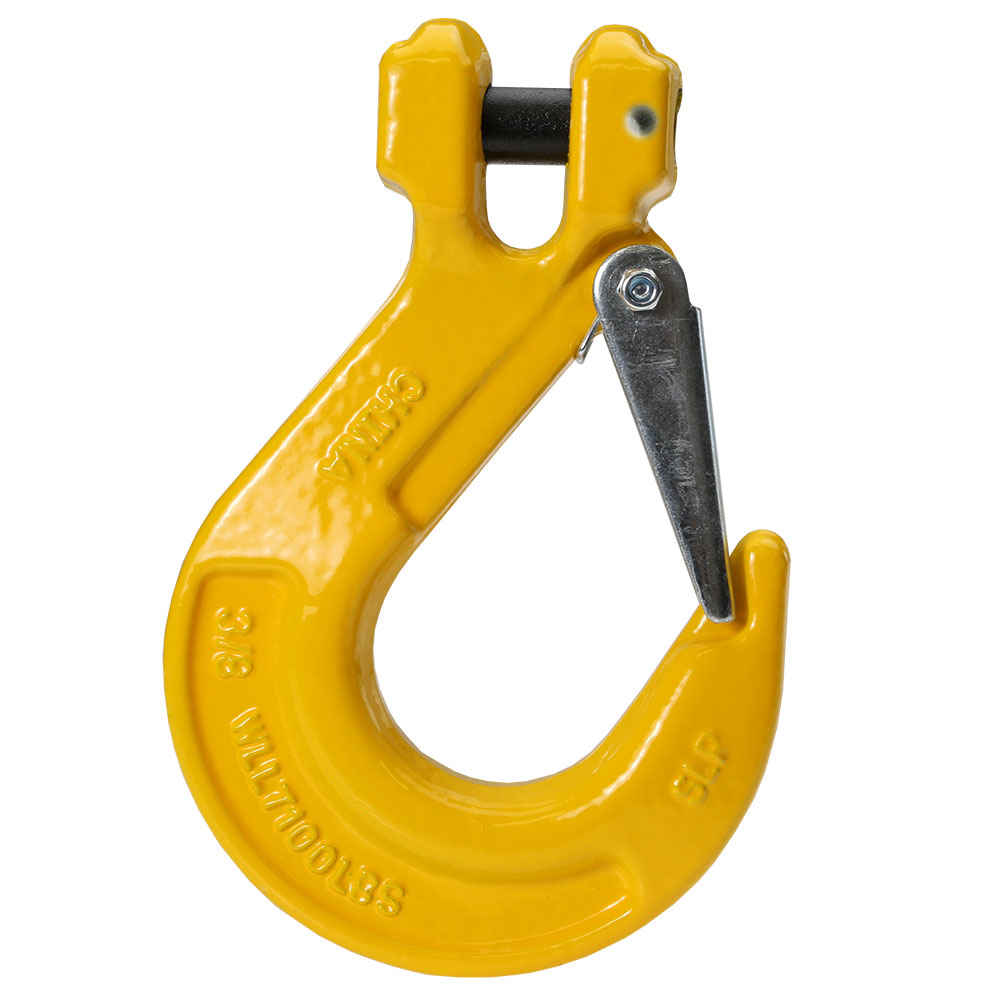You are using an out of date browser. It may not display this or other websites correctly.
You should upgrade or use an alternative browser.
You should upgrade or use an alternative browser.
Hook Vs Loop?
- Thread starter Metcalf
- Start date
WOODY2
Adventurer
Well there goes about 3/4 of the Overlanders.Seriously, with a winch use a hook, otherwise everything else gets tied off, sailors don't use loops. If you can't tie knots, don't leave home.
Metcalf
Expedition Leader
I sometimes get comments on my “huge” hook but it’s the right tool for the job. It will not fail and auto-closes under tension. A rather large strap can fit there (or several) pretty easily.
What is that monster, like a 5/8" size unit?
I do like a safety hook, but I wish they didn't have all the normal 'hook' negatives.....weight, storage, extra connection points, exposed line past the fairlead, etc. Being able to grab many things without needing anything 'extra' has advantages for sure.
Not made in thed USA but they come up for just over $30 on occasion. Both ends of a tree saver easily fit in there and it's big enough so it fits over one of my vertical fairlead rollers so most of it tucks in there pretty nicely between the horizontal rollers. https://www.smittybilt.com/product-skus/smittybilt-delta-hook-18000-lbs-99018/
Metcalf
Expedition Leader
Not made in thed USA but they come up for just over $30 on occasion. Both ends of a tree saver easily fit in there and it's big enough so it fits over one of my vertical fairlead rollers so most of it tucks in there pretty nicely between the horizontal rollers. https://www.smittybilt.com/product-skus/smittybilt-delta-hook-18000-lbs-99018/
It looks like a functional large hook which is good. The gate configuration looks a little tight for ropes and straps.
The 18,000 'WLL' is a little suspect however. A normal 9ton 'rated' G80 hook would be something like this....

5/8" Clevis Sling Hook with Latch - Grade 80
5/8" Clevis Sling Hook with Latch - Grade 80
That has a nearly 2" tall cross section in the hook opening by comparison.
That has a nearly 2" tall cross section in the hook opening by comparison.
Most of the Smittybilt hook is over an inch thick. They do not have the thinner areas in the middle of the body like that USCargo and most rigging hooks I've seen . Who knows, maybe the Chinese grade 80 is inferior but they sure do seem to use a lot of it in the construction. These things look beefy.
I have zero doubt the more expensive parts were probably engineered to do more with less but all I need is to believe my hook is at least 2X as strong as it's 18k WLL to be convinced it is strong enough my winch rope will break long before the hook is at risk of failing.
My tree saver is folded over on itself and only 2" wide at the looped ends and fits ok. The 2 loops overlap but it seems to work. I also carry a selection of shackles as a backup plan.
'UV' damage on modern synthetics is blown a bit out of proportion. Sampson has some good studies on this. Generally speaking, once the 'fuzz' develops on a working rope, they act like a micro shade for the underlying load bearing fibers. All the fibers of the rope do not degrade equally. Most good quality rope these days also comes with a UV treatment in the dye package applied to the rope at the factory.
"modern synthetics" is also a loosely used term. Chinese modern synthetic is probably crap compared to USA modern synthetic. So, yeah, having an extra layer of U.V. protection for the cheap stuff that we run would be a wise move. I'm running the cheap chinese modern syn on the 4runner
Metcalf
Expedition Leader
"modern synthetics" is also a loosely used term. Chinese modern synthetic is probably crud compared to USA modern synthetic. So, yeah, having an extra layer of U.V. protection for the cheap stuff that we run would be a wise move. I'm running the cheap chinese modern syn on the 4runner
Honestly, there isn't as big of a difference between 'the cheap stuff' and the good stuff as most people think. By all means, buy the best stuff you can afford. The 'fuzz' comment still pertains to all Dyneema 12-strand ropes and how it works. The largest quality gap is generally the quality of the secondary operations like splicing the ends on.....short bury lengths, not properly tapered, poor lock stitching, etc. There are only so many factories in the world making ropes though. I have had very affordable import ropes that where perfectly serviceable after 10 years without much, if any, special care.
In some ways, imported line can often come with 'more' of a colorant dye package. The imported ropes will often have a shinier appearance new and deposit more of that coating onto the fairlead as it breaks in. Good quality rope, that colorant is often much more evenly applied and the rope will have a softer feel when new and less deposits during the break in process.
Similar threads
- Replies
- 6
- Views
- 3K
- Replies
- 11
- Views
- 943


